All Ryzen: Q&A with AMD CEO Dr. Lisa Su
by Dr. Ian Cutress on June 26, 2019 9:00 AM EST- Posted in
- CPUs
- Gaming
- AMD
- GPUs
- Trade Shows
- Interview
- Navi
- 7nm
- Cloud
- Zen 2
- Ryzen 3000
- Computex 2019
- Lisa Su
- THATIC
- RDNA
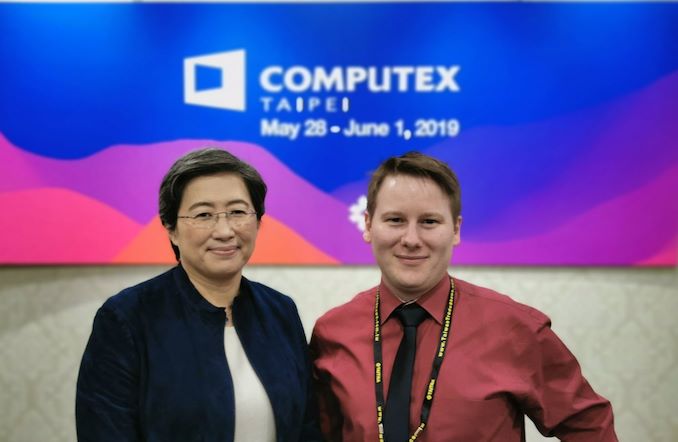
The biggest news of the annual Computex trade show came from AMD: the company is poised to launch its next generation Zen 2 microarchitecture, along with updates to its Ryzen and EPYC product lines. AMD is going all-in with its chiplet CPU architecture, as well as with its new RDNA graphics architecture for the upcoming Navi graphics product family. After AMD’s keynote, we joined a small roundtable of journalists to put questions to AMD’s CEO, Dr. Lisa Su.
The key announcement of the day was the consumer processor line, Ryzen, is being updated with higher core performance, 7nm chiplets, and up to twelve cores for less than half of the price of Intel’s twelve core processor. AMD presented benchmarks which showed raw single thread performance parity at lower frequencies, and the company promotes that its CPUs can equal Intel’s performance at lower power due to the process node technology and features within the chip. These processors will be launched on 7/7, and will also be the first consumer processors to offer PCIe 4.0 connectivity. Along with the CPU, AMD also lifted a corner to its upcoming Navi graphics processor lineup, stating that initial products will be targeting RTX 2070 performance with the new RDNA architecture, with the RX 5700 family coming in July as well.
Questions for Dr. Su came across a series of topics: AMD’s roadmaps, discussions about process technology, a number covering AMD’s market prowess as well as tackling incumbents, and even some discussion on where AMD is headed in the future.
The roundtable was around six members of the press, CEO Dr. Lisa Su, Head of RTG David Wang, and other AMD senior staff on hand to answer questions directly. As with our other roundtable transcriptions, the wording may be edited to make it more readable, as well as grouping questions together based on topic. Where possible and known, the question provider is noted.
This roundtable occured before the E3 announcements, and so some questions have been removed as they were answered during AMD's event there.
All Ryzen, All CPU
Gordon Ung, PC World: Speaking to the 16-core, there’s so much passion in the PC community and in the forums. Is the rumor mill around AMD products a little out of control sometimes?
Lisa Su: Of course what I would like to say is that I read more than any of those guys think. We are very flattered that there are so many people who wonder what we are doing, whether it’s Ryzen, or Navi, how we’re doing in IPC, the core count, the frequency, the price. We have so much advice that people are giving to us. All I can say is that the community is very important to us, to each one of us. What we believe is we are giving the community an exceptional set of products, and that’s how we feel about it.
Mark Hachman, PC World: There was no mention of Threadripper? Have you updated the roadmap?
Lisa Su: You know what’s interesting – some of these things that circulate, on the internet. I don’t think we ever said that Threadripper was not going to continue. It sort of took a life of its own on the internet. You will see more Threadrippers (plural) from us. You will definitely see more Threadrippers from us. Look, we love the high-end desktop market. We see both content creators as well as workstation needs, and Threadripper has done well. You will see more from us with Threadripper.
Tarinder Sandhu, Hexus: Given that you’ve got 24+ threads now in mainstream Ryzen (the 12-core), can it be argued at all that it’s kind of stepping on Threadripper’s toes?
Lisa Su: Threadripper is still an important step up. You will see future generations of Threadripper from us. Now obviously if mainstream is moving up, Threadripper is going to have to move up up.
PCWorld: Last night Intel made a large pitch to us that we’re using artificial benchmarks, benchmarks that aren’t used by the real world, and they’re trying to influence the community to move away from that model. How do you feel about that?
Lisa Su: We also believe that real world applications are important, no doubt about it. But at some point you have to compare X to Y, and so we will use benchmarks. You might have noticed that we switched from Cinebench R15 to R20. We did that on purpose, it's a harder test than R15. When we look at gaming performance, we do our best to benchmark clearly, and all of our stuff is apples to apples. Benchmarks are important – they give you a view of competitiveness. But at the end of the day it’s about the user at home, and what we believe is we give the user a lot of choice depending on what your price points are, what your performance requirements are, whether you want to use a water cooler, or an air cooler, I think we give you a lot of choice in the processor market.
David McAfee, AMD: I’ll add a little bit to that. On what you saw with 3rd Gen Ryzen processors today, you know Cinebench R20 is based on the same engine that’s used in Maxon Cinema 4D, which is a real world application and a measure of processor performance. Our second demonstration was built around Blender – a real world application that people use every day. We have tried very very hard to make sure that as we talk about performance of a part it’s based on real experiences that people are going to get and not synthetic workloads.
Robert Hallock, AMD: This topic is near and dear to my heart. It’s my day job to pick the benchmarks that we use and the last thing I want to do in my capacity at AMD is put forth a set of benchmarks that misleads the public in any way. That would make me feel like we’re out of line with what they want, and so we’re constantly looking at the suite of benchmarks you are using in the reviewer community, and that users use, software that companies use, and we try to find the right balance so we’re authentic and honest with what the product is. To do anything else is just an injustice to both the community and the public itself.
Ray Tracing and GPU
Devinder Sharma, Engadget: I feel like someone has to ask about graphics details. I’m interested in what you guys are doing with ray tracing – it seems like the next big thing for the next generation of consoles. I know we’ve heard about it before, can you confirm with RDNA?
Lisa Su: We have a lot more RDNA content coming, both David (Wang) and Scott (Wasson) will be presenting – some of you may be coming to our Tech Day in a few weeks at E3 and we’re going to talk about all that. We only had an hour today! I won’t say any more, but we’ll give you more of our roadmap at E3.
Ian Cutress, AnandTech: Given that Ray Tracing has been announced in the PS5 specs, can you say if that’s a specific Sony optimization or is that inherent in RDNA?
Lisa Su: We certainly have done very specific optimizations for Sony. They are a very deep partner with us on semi-custom, and there are optimizations there. However we view ray tracing as a very important element across the portfolio. We will have ray tracing in a number of places. Will you look at that, you got me to say more about ray tracing!
David Wang, AMD: We started RDNA before the Sony engagement. I think RDNA is revolutionary, and it is very flexible in terms of being able to be customized for different types of workloads.
Hexus: You might have answered this question, but what are your thoughts on ray tracing in mainstream graphics? (to David)
David Wang: We’ll talk more about ray tracing at our tech day. What’s your view, what’s your view on the importance of ray tracing for consumer gaming? What are the success factors?
Hexus: I think it’s been shown a bit too early, and NVIDIA have got a pretty decent market share, but they’ve only got a couple Triple A titles where it’s relevant. So I think we have to wait for at least a year. It’s nice to have the hardware buzzwords, but in terms of usable graphics, and especially in mainstream, I think we’re some way off.
Lisa Su: What you should expect though is ray tracing is important technology, and you will see it across our portfolio. Particularly working with the ecosystem will ensure that there will be strong ecosystem support.
David Wang: Ecosystem support is very important!
Ian Cutress: How important is the halo spot in the GPU market for AMD?
David Wang: Very very important. I love to be able to compete very well with NVIDIA.
7nm
Nikkei: Because you team up with TSMC a lot here, and TSMC is your very important ecosystem partner right now. Can you share with us how many 7nm products are you building with TSMC, and will you do 5nm?
Lisa Su: We’ve done many, many 7nm products. I don’t think we’ve said exactly how many. Think about it as: server, PC, graphics, as well as our custom products as we grow our product portfolio. We’re going to be aggressive with leading edge technology. I’m not saying which 5nm and when, but you will see us being aggressive with the leading edge.
Paul Alcorn, Tom’s Hardware: Given the fact that you guys are now sourcing 7nm strictly from TSMC, instead of having some type of redundancy, and then the increasing popularity of Ryzen, are you guys concerned about supply from TSMC at all?
Lisa Su: We have a great relationship with TSMC, and I would say that our ramp for 7nm has been one of the smoothest ramps we’ve had over a number of different products. We have plenty of capacity.
Market Share and Market Tensions
Nikkei: I have a question regarding AMD’s market share in PC and GPU as well as your role in datacenter. Do you have a target in mind, like you’ve mentioned a double digit percentage share over the next six quarters about your server – can you elaborate a bit about these segments?
Lisa Su: We are always looking to increase our market share. That’s why we put out great products. As it relates to our market share targets, for server what we’ve said is we can achieve double digit market share from 4-6 quarters from the end of 2018. So that was sort of the timing of that. If you talk about graphics, the truth is AMD graphics has been very strong in the past and is very strong today. With the RDNA architecture we think it will be even stronger moving forward so we’re very excited about opportunities to gain share in graphics. In the PC market, when you look historically at AMD in the PC market, we have been about high teens, low double digits market share depending on the time you look. We’ve gained market share for the last six quarters on the strength of Ryzen. We think 3rd Gen Ryzen is going to be very helpful to continue that.
Nikkei: I think this time Computex is really AMD’s show. But even with the whole industry outlook, are you worried? But it is still a very exciting time, a dynamic time. How do you think this market will affect a positive outlook, and will US-China tensions affect any of your customers?
Lisa Su: Certainly from a product standpoint it does not change. From a product standpoint, our roadmaps are laid out for the next three-to-five years. We’re continuing to be very blessed from a business standpoint, and of course we pay attention to some of the global issues out there. You know, all the business leaders would like it to be resolved as soon as possible. But from a product roadmap standpoint, it does not have any effect.
Nikkei: Could you comment on the Huawei situation?
Lisa Su: Huawei is a customer of ours, and they’ve done some very nice PCs with our first generation Ryzen as well as our second generation Ryzen. Obviously we’re a US company, so we’re complying with the current US regulations. As I’ve said, we believe certain things to be resolved as soon as possible, so I’m saying right now we are abiding by the US regulations.
Ian Cutress: Speaking to US regulations, how does your joint venture with THATIC play into that? (This question was asked before the 6/21 regulation updates)
Lisa Su: THATIC was formed several years ago, and we did the original technology transfer at that point in time. We are continuing the joint venture, and most of the work happens on the joint venture side.
Paul Alcorn: Will that keep moving forward with future generations, such as Zen 2 and Zen 3?
Lisa Su: We are not discussing any additional technology transfers.
Paul Alcorn: You aren’t discussing with them, or you aren’t discussing with us?
Lisa Su: Just to be clear - the THATIC joint venture was a single generation technology license, and there are no additional technology licenses.
Ian Cutress: License on a core, or on x86?
Lisa Su: A single implementation.
Ian Cutress: So the RTL of the SoC?
Lisa Su: I don’t think we have ever said what they licensed. We said that they have licensed an x86 CPU implementation.
Consoles and The Cloud
Q: Sony, Microsoft and Google are talking about cloud gaming, while AMD is so prevalent in consoles. How do you see on premise console gaming versus cloud gaming in the future?
Lisa Su: We believe gaming will be on all form factors, whether it’s PCs, consoles, or cloud. All of that will require great graphics capabilities as well as a number of other things. We are very proud to be partnering with Google on their Stadia streaming platform. There are a number of other cloud efforts that AMD is very involved in. From my standpoint, I think that they're all going to co-exist, so it’s not like one is going to take over. There are business models that depend on where you live, all that stuff. I think that cloud gaming will be important, and we’re going to continue to invest in that technology. It's a strategy that includes both EPYC and Radeon.
Engadget: Do you feel like a lot of the previews about the Playstation 5 gave a number of hints of what you guys are working on? A big thing for them is the no loading of levels. Is there anything in particular that you guys are providing that comes over to PC gaming as well, like PCIe 4.0?
Lisa Su: PCIe 4.0 definitely helps. As it relates to things, they've been very specific on their proprietary technologies.
CPU Research and Development
Ian Cutress: We’ve seen a lot from other companies in the industry that one of the buzzwords over the next few years is AI (Artificial Intelligence), ML (Machine Learning), and when it comes to consumer computing and enabling inference models. We’ve got companies on the PC that are enabling inference models in their software to accelerate creators, however AMD has not currently spoken of any dedicated AI specific silicon or the options in the consumer market around this. Can you talk to how AMD is approaching this matter, especially when a lot of your competitors are actively reaching users in this role?
Lisa Su: So we really believe in a heterogeneous architecture. So if you look at our consumer CPUs, or sort of how we think about the system environment, the world of CPUs plus GPUs plus accelerators, it is all important. We are very actively working on machine learning accelerators integrated into our silicon and we’ll talk more about that as we get closer to the launch.
Ian Cutress: When I spoke with Mark Papermaster at CES, he explained to be that AMD has one CPU architecture group and two implementation groups. Given recent successes with AMD’s product portfolio, do you expect that to change?
Lisa Su: The CPU group is definitely getting larger, if that’s what you mean! But so is the GPU group – David (Wang) has a very large group too. But we are on a very clear roadmap – Zen 2 is what we’re talking about today, Zen 3 is deep deep in development, and Zen 4 is also in development. Similarly, with the GPU group, we’re talking about the first generation of RDNA today, and we have several generations in parallel. So I think the one thing that I would like to say is that our roadmap has not changed. Our roadmap, when Mark and I and the rest of the team started the roadmap, was the idea that we needed multiple generations of continuous improvement. So with Zen, Zen+, Zen 2, Zen 3, that was all part of the plan. As we go forward, we’re going to continue to be very very aggressive about the CPU.
Ian Cutress: Does AMD have the capabilities (or desire) to develop two different CPU microarchitectures for different ends of the market?
Lisa Su: You know, it’s not clear that we would want to do that. We have learned by focusing our resources on Zen. Now of course Zen on the server is a bit different from the PC – certainly the frequencies, the power, and all these things are different. But we get incredible learning by using the same technology across multiple markets, and I don’t think we are likely to change that in the near future.
Ian Cutress: Given that AMD’s semi-custom business with the consoles is turning to Zen 2 and Navi in silicon, can you say anything about Renoir?
Lisa Su: [to self] Can I say anything about Renoir? [to others] It’s doing well.
Ian Cutress: There have been some unverified reports that the project is dead.
Lisa Su: That is not true. It’s going well. By the way, have we said anything about Renoir?
John Taylor, AMD: I don’t think we’ve said anything about Renoir. I think Ian’s going into uncharted territory here. What’s Renoir? [laughs] Future Ryzen Mobile.
PCWorld: So Intel for the most part has sort of hit a wall with where they are going on desktop clients, and it feels like what they’re resorting to other things like Optane or Thunderbolt 3, and leveraging all these things into the CPU, other than compute power. Is that going to be a problem for AMD going forward given you’ll have to fight Optane and TB3 and what they’re going to put into desktop?
Lisa Su: First of all, we have long desktop architectures. We have been really focused on bringing more compute performance into all systems, the desktop, the server, the laptop. I think that open standards are really important, and you know we work crossing the street with the memory vendors and all the other guys and we’re going to continue to do that. So I don’t see it as a significant disadvantage, I see it as an opportunity. That’s why we’re always bringing the ecosystem together, and if you look at the number of people who are supporting PCIe Gen 4 – we expected to be first, and the fact that we are first and all of these ecosystem partners are being extraordinarily aggressive in their technology to be qualified and available with our ecosystem I think gives you just a little bit of a view of the ambition of the ecosystem.
PCIe Gen 4.0 and Motherboards
Paul Alcorn: With PCIe 4.0 there was a pretty big lag there before it was introduced, and PCIe 5.0 is just right around the corner. Do you guys foresee a faster uptake of PCIe 5.0 such that PCIe 4.0 will be shortlived?
Lisa Su: Well I think it remains to be seen. Things always seem like they’re going to be faster, and things always take a little bit longer than expected.
Paul Alcorn: There have been reports that some motherboards, especially lower end ones, won’t support the new Ryzen, the 3rd Gen processors. Is that accurate? The A-series boards in particular.
David McAfee: So I think that as we look across the ecosystem of motherboards that exists today, we will certainly make available BIOS updates to our ecosystem partners to include that on the different levels across their portfolio. But I do not expect that every motherboard will be updated for Ryzen 3000 series processors from partners. That will really be kind of a portfolio decision from their standpoint as well, as to where they apply those updates and when they choose not to apply those updates.
Robert Hallock: Do you not think that there is a bigger story here with AM4, in that no-one in the history of x86 has created an upgradeable socket quite like AM4 in a time where our competitors are breaking socket compatibility yearly. Basically you have three consecutive generations that all drop into the same socket, and that socket was started at four cores years ago, and is now 12+ cores, has PCIe Gen 4, has grown massively. That to me is the bigger story than a motherboard here and there that doesn’t get it.
Paul Alcorn: With PCIe 4.0 backwards compatibility, who is validating? Do the motherboard partners go to PCI-SIG, or through AMD, to go validate those transfer rates?
David McAfee: So certainly, if they’re going to claim their motherboards are PCIe Gen 4 ready, that’s a certification that goes through PCI-SIG, not through AMD. I think that what we’re seeing as we launch our new product, the X570 platform, that’s the platform that will carry the PCIe Gen 4 readiness certification that goes along with it. Beyond that, other motherboards may or may not be compatible, so it really depends on how those old motherboards were designed, and what their capabilities are at the platform level, and as we go out of the gate, we do not expect the older motherboards to have compatibility for Gen 4. [AMD has since confirmed that only X570 at this time will have PCIe 4.0.]
Mobile and Mobile Form Factors
Engadget: On a broader level, I’m wondering how AMD is looking at the changing form factors of PCs? That was a big trend last year at Computex, and we’re still seeing it, we’re seeing different kinds of verticals, and we’re not always seeing AMD powering these systems. Is that something you guys are thinking about?
Lisa Su: You know we’re doing a lot with the OEMs, I think that you’ll see more and more form factors are being done with second generation Ryzen Mobile. I think you’ll see more as we go forward. So look, I think the PC, and the form factor, means that innovation is very important. We’re very involved with Microsoft and the OEMs.
Nikkei: How do you feel about the 5G PC, or the foldable PC? Do you see a usability for that kind of thing?
Lisa Su: Yeah there will certainly be 5G PCs. I think 5G is still early, and the infrastructure is still not there yet on the consumer side.
Ian Cutress: Intel loves doing these projects, such as Ultrabook and now the new Athena project, where the goal is to bring the ecosystem together to build better designs, or ultimately to unify as much of Intel’s hardware under a single scheme. AMD typically hasn’t really pushed back in the mobile space – you’re focusing on authenticating form factors with a brand logo, and left it up to the OEMs.
Lisa Su: I think what you hopefully have seen is the progression of form factors from first generation to second generation Ryzen Mobile and beyond. I will say that for a long time OEMs didn’t necessarily put AMD processors in the best form factors. We’ve been working very closely with the OEMs to introduce many more – that’s why you saw the Microsoft modern device category as something that we focused a lot on. We’re focusing a lot on the user experience and you know what that brings, I think, you will be very pleasantly surprised with the new form factors that will come out with AMD in the coming months.
Other Thoughts
Ian Cutress: What are your thoughts about your competitors hiring a number of tech media journalists? Ultimately this reduces the number of people talking about AMD?
Lisa Su: You know, you guys seem to talk about us a lot! I don’t feel worried about that. I am extremely proud of our team we have at AMD. If you look across our engineering team, on the CPU side or GPU side of our business environments, I think we have a tremendous team that’s always going to push the envelope. I like tech reporters reporting on technology, to thank you guys for doing that. And you know I feel very good about the amount of attention that AMD gets. Sometimes I think maybe a little too much! No actually that’s not true – there’s no such thing as too much. There’s probably a little bit of ensuring that the rumor mill doesn’t get out of control.
Many thanks to Dr. Lisa Su and her team for their time.
Related Reading
- An Interview with AMD’s Forrest Norrod: Naples, Rome, Milan, & Genoa (Q3 2019)
- Naples, Rome, Milan, Zen 4: An Interview with AMD CTO, Mark Papermaster (Q4 2018)
- An Exclusive Media Interview at AMD Tech Day, with CEO Dr. Lisa Su (Q1 2018)
- Making AMD Tick: A Very Zen Interview with Dr. Lisa Su, CEO (Q1 2017)
- An AnandTech Exclusive: The Jim Keller Interview
- Talking Snapdragon: An Interview with Cristano Amon, President of Qualcomm
- An Interview with Lisa Spelman, VP of Intel’s DCG: Discussing Cooper Lake and Smeltdown
- Interview with Rod O’Shea, EMEA Embedded Group Director and Site Manager for Intel UK
- Interview with Jackson Hsu, Product Management Director at GIGABYTE


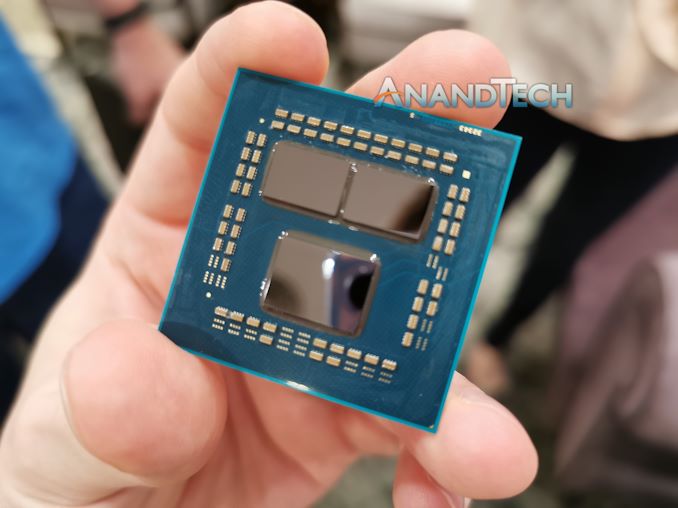
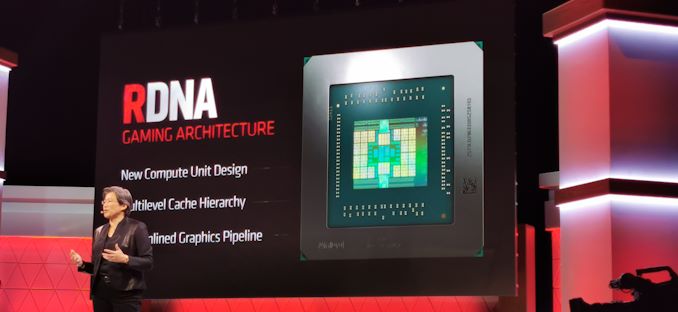
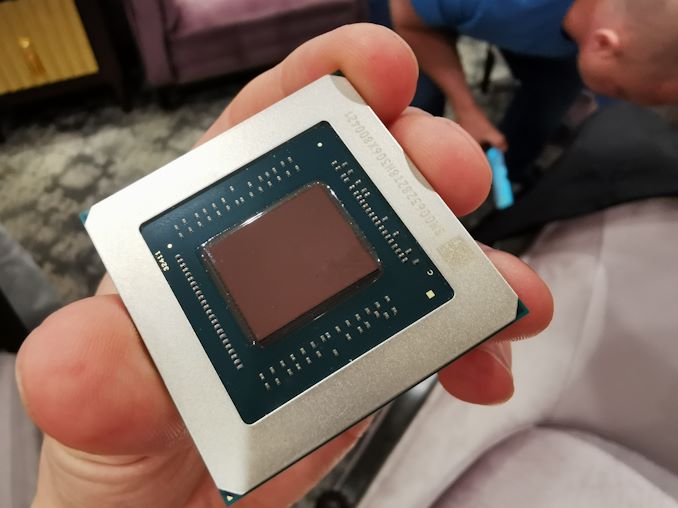
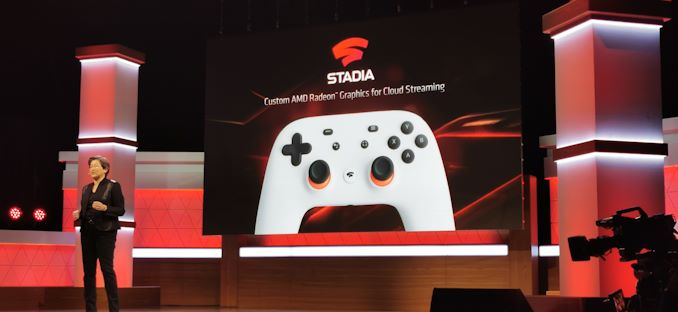
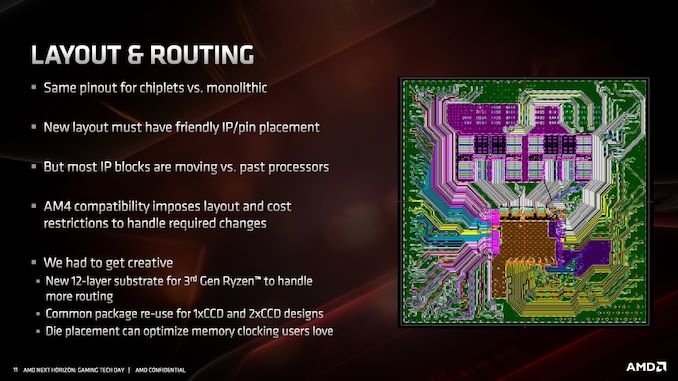
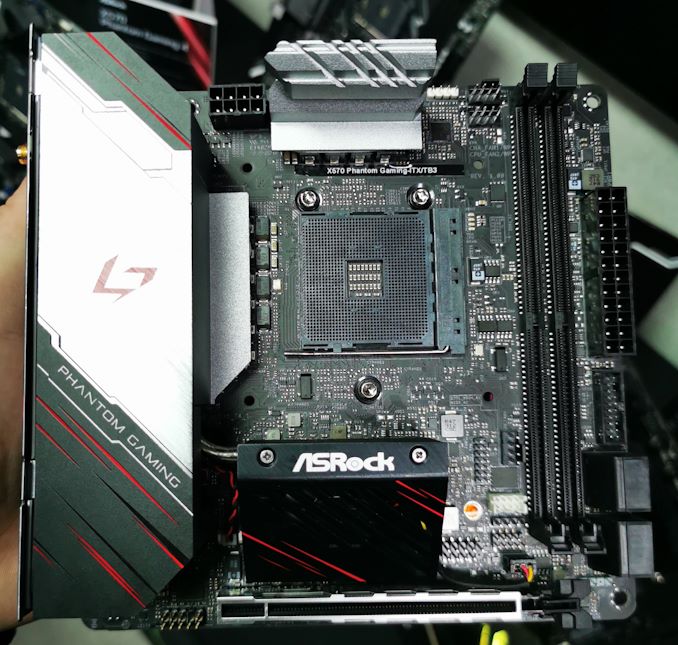
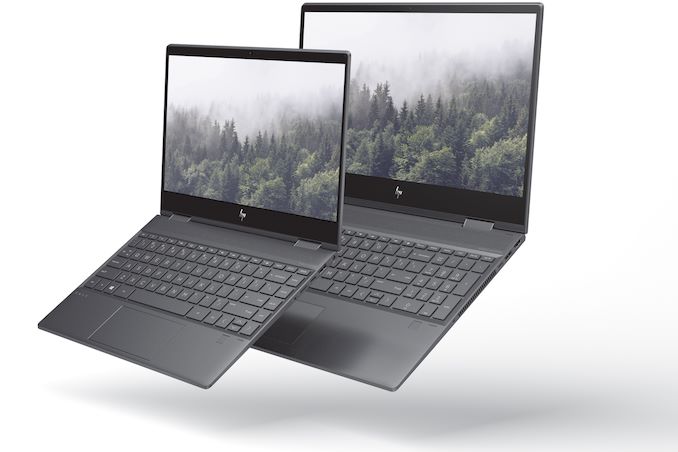








84 Comments
View All Comments
quantumshadow44 - Wednesday, June 26, 2019 - link
Ian is Dr in what?Ian Cutress - Wednesday, June 26, 2019 - link
Computational Chemistry, from Oxford. Awarded in 2011 with nine first-author research papers.https://scholar.google.com/citations?user=8ZSmKjAA...
drexnx - Wednesday, June 26, 2019 - link
other tech sites:"How much of your life do you not want to be ray traced?"
Anandtech:
"How many molecules are required to measure a cyclic voltammogram?"
quantumshadow44 - Wednesday, June 26, 2019 - link
nice. You are good man.thinklink - Wednesday, June 26, 2019 - link
Thanks Ian for clarifying, I follow you in tweetland, Reddit, and this website. I just realized that you finally use your title just a few weeks ago. I didn't know that you had your doctorate in 2011! :)IanCutress - Wednesday, June 26, 2019 - link
I had a number of people over the years who I respect in the industry tell me I should be using my title, so I made the call after E3CaedenV - Wednesday, June 26, 2019 - link
Good call!zmatt - Wednesday, June 26, 2019 - link
All these years and you only started recently using your title. I had assumed you had recently earned your doctorate.ksec - Wednesday, June 26, 2019 - link
Well he is British, Understatement is a culture there.Death666Angel - Thursday, June 27, 2019 - link
I distinctly remember some of the podcasts (with the "old crew" around Anand and Brian Klug) and there was always a fun emphasize on _Dr._ Ian Cutress. I've adopted that in my head when I read his stuff. :D